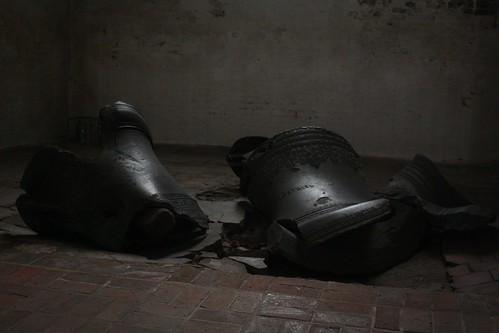I have something of an informal goal of learning a new programming language every few years. It’s not so much a goal as it is something of a discomfort. There are so many programming languages out there, with so many niches and approaches to problems, that I get uncomfortable with my lack of knowledge of some of them after awhile. This tends to happen every few years.
The last major language I learned was Haskell, which I started working with in 2004. I still enjoy Haskell and don’t see anything displacing it as my primary day-to-day workhorse.
Yet there are some languages that I’d like to learn. I have an interest in cross-platform languages; one of my few annoyances with Haskell is that it can’t (at least with production quality) be compiled into something like Java bytecode or something else that isn’t architecture-dependent. I have long had a soft spot for functional languages. I haven’t had such a soft spot for static type checking, but Haskell’s type inference changed that for me. Also I have an interest in writing Android apps, which means some sort of Java tie-in would be needed.
Here are my current candidates:
- JavaScript. I have never learned the language but dislike it intensely based on everything I have learned about it (especially the diverging standards of implementation). Nevertheless, there are certain obvious reasons to try it — the fact that most computers and mobile phones can run it out of the box is an important one.
- Scheme. Of somewhat less interest since I learned Common Lisp quite awhile back. I’m probably pretty rusty at it, but I’m not sure Scheme would offer me anything novel that I can’t find in Haskell — except for the ability to compile to JVM bytecode.
- Lua — it sounds interesting, but I’m not sure if it’s general-purpose enough to merit long-term interest.
- Scala sounds interesting — a OOP and FP language that compiles to JVM bytecode.
- Smalltalk. Seems sad I’ve never learned this one.
- There are some amazing webapps written using Cappuccino. The Github issue interface is where I hear about this one.
- Eclipse. I guess it’s mostly not a programming language but an IDE, but then there’s some libraries (RCP?) or something with it — so to be honest, I don’t know what it is. Some people seem very excited about it. I tried it once, couldn’t figure out how to just open a file and start editing already. Made me feel like I was working for Initech and wouldn’t get to actually compile something until my TPS coversheets were in order. Dunno, maybe it’s not that bad, but I never really understood the appeal of something other than emacs/vi+make.
- A Haskell web infrastructure such as HSP or hApps. Not a new language, but might as well be…
Of some particular interest to me is that Haskell has interpreters for Scheme, Lua, and JavaScript as well as code generators for some of these languages (though not generic Haskell-to-foo compilers).
Languages not in the running because I already know them include: OCaml, POSIX shell, Python, Perl, Java, C, C++, Pascal, BASIC, Common Lisp, Prolog, SQL. Languages I have no interest in learning right now include Ruby (not different enough from what I already know plus bad experiences with it), any assembly, anything steeped in the Microsoft monoculture (C#, VB, etc.), or anything that is hard to work with outside of an Emacs or vim environment. (If your language requires or strongly encourages me to use your IDE or proprietary compiler, I’m not interested — that means you, flash.)
Brief Reivews of Languages I Have Used
To give you a bit of an idea of where I’m coming from:
- C: Not much to say there. I think its pros and cons are well-known. I consider it to be too unwieldy for general-purpose use these days, though find myself writing code in it every few years for some reason or other.
- Perl: The first major interpreted language I learned. Stopped using it entirely after learning Python (didn’t see any advantage of Perl over Python, and plenty of disadvantages.)
- Python: Used to really like it. Both the language and I have changed. It is no longer the “clean” language it was in the 1.5 days. Too many lists-that-aren’t-lists, __underscorethings__, etc. Still cleaner than Perl. It didn’t scale up to large projects well, and the interpreted dynamic nature left me not all that happy to use it for some tasks. Haven’t looked at Python 3, but also it probably isn’t ready for prime time yet anyhow.
- Java: Better than C++ for me. Cross-platform bytecode features. That’s about all that I have to say about it that’s kind. The world’s biggest source of carpal tunnel referrals in my book. Mysteriously manages to have web apps that require 2GB of RAM just to load. Dunno where that came from; Apache with PHP and mod_python takes less than 100M.
- Haskell: A pretty stellar mix of a lot of nice features, type inference being one of the very nice ones in my book. My language of choice for almost all tasks. Laziness can be hard for even experienced Haskellers to understand at times, and the libraries are sometimes in a bit of flux (which should calm down soon). Still a very interesting language and, in fact, a decent candidate for my time as there is some about it I’ve never picked up, including some modules and web toolkits.
- OCaml: Tried it, eventually discarded it. An I/O library that makes you go through all sorts of contortions to be able to open a file read/write isn’t cool in my book.

